Cabbage Farming Information Guide
The following write-up details about Cabbage farming techniques, sowing, planting information, harvesting, and yield.
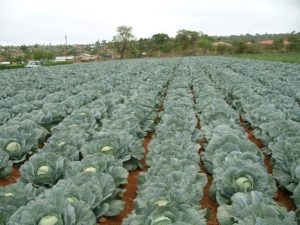
Cabbage and It’s importance:
The cabbage is a popular cultivar of the species Brassica Family and is used as a leafy green vegetable. The only part of the plant that is normally eaten is the leafy head; more precisely, the spherical cluster of immature leaves, excluding the partially unfolded outer leaves. Cabbage is used in a variety of dishes for its naturally spicy flavor. The so-called “cabbage head” is widely consumed raw, cooked, or preserved in a great variety of dishes. Cabbage is an excellent source of vitamin C. It also contains significant amounts of glutamine, an amino acid that has anti-inflammatory properties.
Suitable Climatic Conditions for Cabbage Plantation:
Cabbage grows best in a cool moist climate and is very hardy to frost. In areas with comparatively dry atmospheres, its leaves tend to be more distinctly petiole than in the more humid areas. In a hot dry atmosphere, its quality becomes poor and much of its delicate flavor is lost. Its germination is best at a soil temperature of about 55°F to 60°F. Temperatures below this and above this are not suited for it. Well, hardened seedlings can tolerate a temperature of 20°F to 25°F. It is grown mainly as rabi crop during winter. But in and around Nasik (Maharashtra), Ootacamond (Madras), and in semi parts of Kerala, it is grown as Kharif crop also.
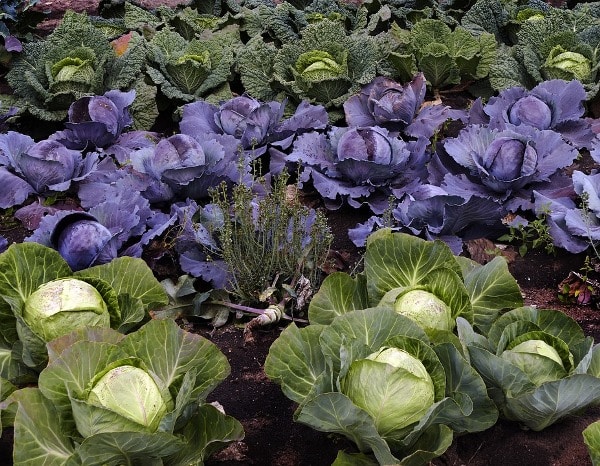
Best Suited Soil for Cabbage Production:
Cabbage is grown in varied types of soils ranging from sandy loam to clay. It requires a pH ranging from 5.5 to 6.5 for higher production. It also thrives best when the soil is rich in organic matter and good drainage.
Read: How To Grow Vegetables In Balcony.
Field Preparation for Cabbage Plantation:
The land is prepared by plowing it 3 to 4 times. The first plowing should be done by soil turning plow, and the bulky organic manures should be spread in the field. Then the land should be plowing and levelling the land, beds of suitable size and irrigation channels are made.
Cabbage Seed Rate and the Best Time of Sowing:
Normally 120 grams of seeds are required for one acre. Apply 480 Kgs of dry manure into a seedling bed of 160 m², and then sow the seed on the seedbed. This should produce sufficient seedlings for one acre of field. Cabbage is grown mainly as Rabi crop during winter (Sept.-Oct.), But around Nasik (Maharashtra) it is grown as Kharif crop also.
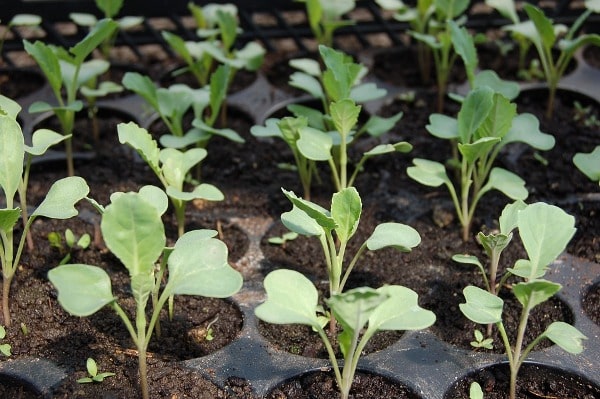
Transplanting and spacing of Cabbage Plants:
Transplant the seedlings at 4- 5 true leaves stage, about 25 days after sowing. Usually, we space them 45 cm apart in double rows of 45-60 cm apart on each bed of 90- 100 cm wide.
Cabbage plant Spacing:
- Early maturity – Row to Row: 45 cm, Plant to Plant: 30 cm.
- Late Maturity – Row to Row: 60cm, Plant to Plant: 45 cm.
Water requirement of Cabbage Plants:
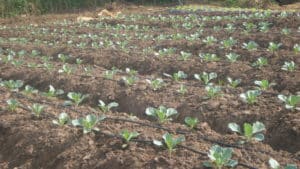
Provide a continuous supply of moisture. Install a drip system with main and sub-main and place the inline laterals at the interval of 1.5. Place the drippers at the interval of 60 cm for 4 LPH or 50 cm for 3.5 LPH in the lateral system. Form the raised beds at 120 cm width at an interval of 30cm and place the laterals at the center of each bed. The interval between two irrigations depends upon climate, soil and plant growth. In winter season irrigation at an interval of 8-10″days is sufficient. Cabbage cannot tolerant drought. Therefore irrigation should be applied frequently and evenly, especially in the head developing period. Irrigation should be applied following the first and the second side dressing. It is better to keep a little water in the furrow in the hot season. But drainage must be carried out in the rainy days.
Read: Best Practices of Organic Farming.
Pruning and weed control of Cabbage Plants:
It is necessary to remove the side shoots as soon as possible. Weeds must be removed as early as possible by hoeing but not too deep to damage the roots. Hoeing should not be done during the latter part of the growing season. Herbicide can be used for weed control in the cabbage field.

Fertilizers and Manures requirement for Cabbage Production
It is better to use urea instead of Ammonium Sulphate where the soil is relatively acidic. If the soil is boron deficient, 5 –10 kg/ha borax should be applied before land preparation. For basal fertilizer, manure should be applied into the rows before chemical fertilizer. Chemical Fertilizers: Fertilizer application varies with soil fertility.Basal application before transplanting: 25:50:60 NPK kg / acre. First top dressing 10-15 days after transplanting: 25:50:60 NPK kg / acre. Second application 20 – 25 days after first top dressing: 25:00:00 NPK kg / acre.Third application 10-15 days after second application: 25:00:00 NPK kg / acre. Boron & Molybdenum should be sprayed at the button stage.
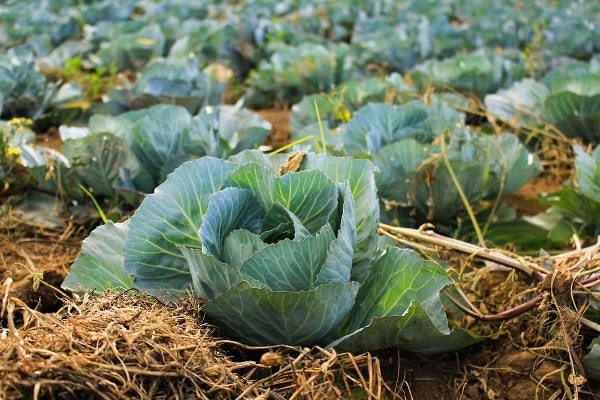
Harvesting Techniques of Cabbage:
Cabbage is normally harvested when the heads reach full size and are firm, In cabbage harvesting is done depending on the maturity of the head and demand in the market. Normally harvesting is done when heads are firm. If prices are high in the market harvesting is done earlier when heads are small and loose heads are cut with a knife with little stalk arid some leaves. Proper grading is followed before heads are sent to market.
The yield of Cabbage:
Usually Hills: 70 – 80 t/ha in 150 days. Plains: 25 – 35 t/ha in 120 days. The yield of cabbage depends upon the variety, growing season and management practices.
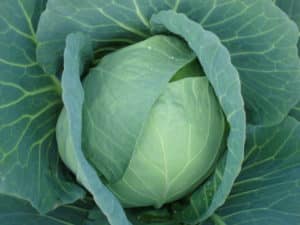
Marketing of Cabbage:
Can be transported to local markets or wholesale vegetable dealers.
Bottom Line of growing Cabbage:
It’s fun to cultivate the Cabbage, and good profits are possible in cabbage farming when best practices are implemented.
Read: Green Gram Farming and Cultivation Practices.
It very interested farming. Like it well
It is interesting
It’s very helpful to students and researchers, planning to conduct a thesis about cabbage.
Awesome information, thank you.